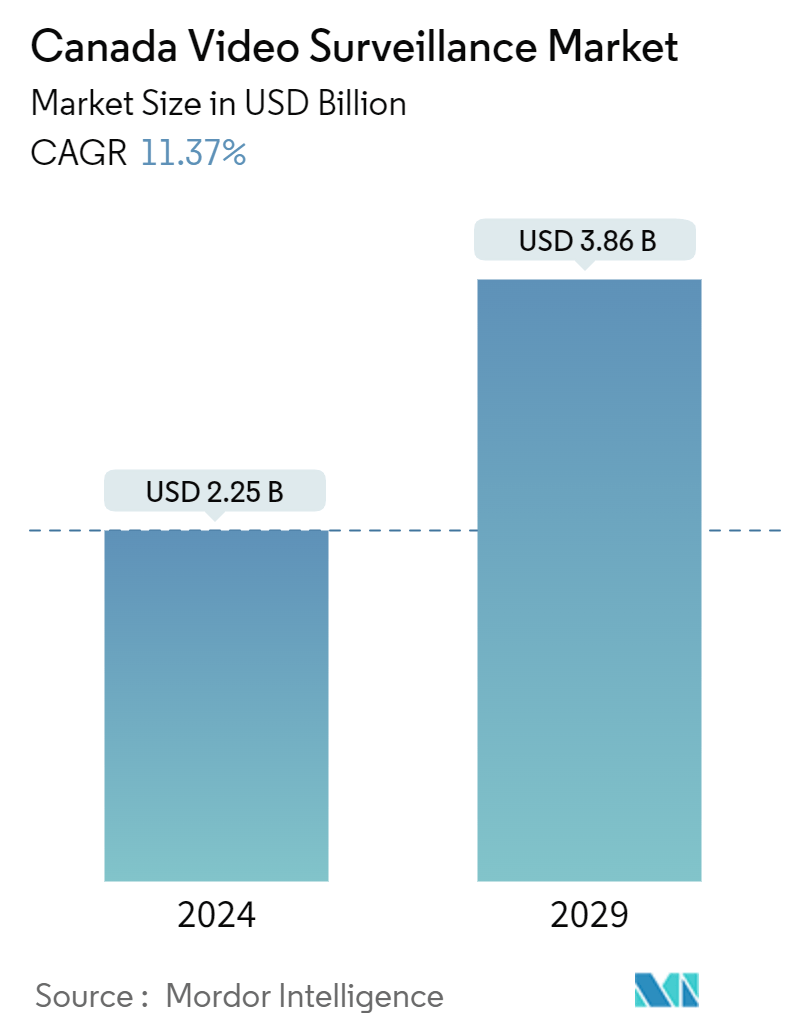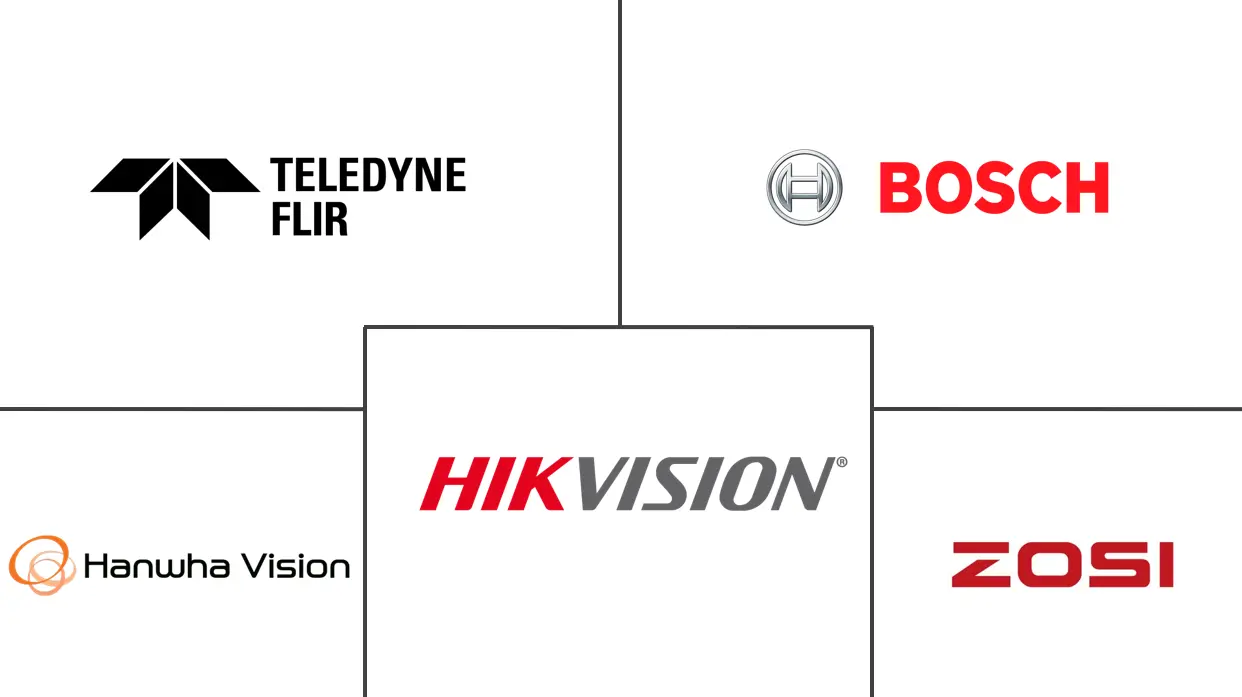Market Size of Canada Video Surveillance Industry

| Study Period | 2019 - 2029 |
| Base Year For Estimation | 2023 |
| Market Size (2024) | USD 2.25 Billion |
| Market Size (2029) | USD 3.86 Billion |
| CAGR (2024 - 2029) | 11.37 % |
| Market Concentration | Low |
Major Players
*Disclaimer: Major Players sorted in no particular order |
Canada Video Surveillance Market Analysis
The Canada Video Surveillance Market size is estimated at USD 2.25 billion in 2024, and is expected to reach USD 3.86 billion by 2029, growing at a CAGR of 11.37% during the forecast period (2024-2029).
- The Canadian video surveillance market has seen substantial growth and evolution in recent years. This surge can be attributed to technological advancements, rising security concerns, and the evolving public safety and security regulatory landscape.
- Integrating artificial intelligence (AI) and machine learning into video surveillance systems has revolutionized the industry, enhancing facial recognition, behavior analysis, and automated threat detection capabilities. This integration significantly boosts the efficiency and effectiveness of surveillance operations. Additionally, there is a clear shift toward cloud-based solutions in the video surveillance sector. Cloud storage offers scalability, cost savings, and the added benefit of remote video feed access, a feature gaining popularity among businesses and government bodies alike.
- The demand for high-resolution cameras, notably 4K and above, is rising. These advanced cameras offer sharper images and more detailed footage, essential for precise identification and analysis. Companies like Lorex, Security Camera King, and Zosi are among those catering to the growing Canadian market.
- Canada faces a surge in crime rates, underscoring the urgent demand for enhanced surveillance systems. The inflating Violent Crime Severity Index is a clear indicator of the severity of the situation. Notably, the homicide rate has hit a 30-year peak, while sexual assault incidents are at alarming levels. Statistics Canada data shows a consistent uptrend in firearm-related violent crimes, reaching a historic high in 2024 since data collection began.
- Businesses increasingly adopt surveillance systems to enhance workplace safety, monitor employee behavior, and deter internal theft and misconduct. Government policies reinforce this shift, promoting the deployment of security cameras in residential and commercial spaces. For instance, Manitoba, Canada, is introducing a rebate program, slated to begin in September 2024, that provides a USD 300 incentive for home business security equipment. This initiative encompasses various security essentials, including cameras, alarms, and motion detectors.
- Moreover, many nationwide retailers now favor video surveillance systems to combat theft, monitor customer behavior, and enhance the shopping experience. Advanced analytics further assists in optimizing store layouts and understanding customer traffic. There's a notable uptick in video surveillance adoption on the residential front as homeowners deploy cameras to deter break-ins and monitor their properties. Concurrently, governmental bodies and local administrations are intensifying their investments in surveillance networks to enhance public safety. This initiative includes extensive camera placements in public spaces, transit centers, and critical infrastructure.
- Despite ongoing debates on privacy and security, the cybersecurity sector grapples with escalating threats. Interconnected surveillance systems are increasingly vulnerable to cyberattacks, posing risks to both security and privacy. The market is poised for significant growth, buoyed by advancing technologies and rising security needs.

